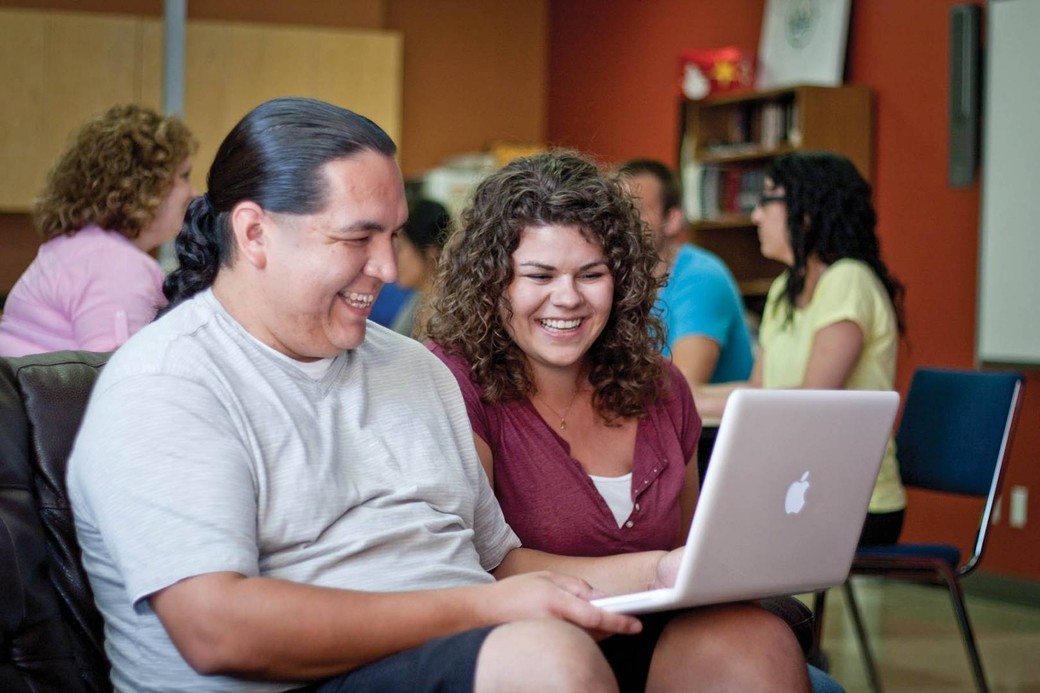
Promoting Success in Aboriginal Education
Knowledge is power and empowering children through education is a gift that lasts a lifetime. That is why the Canadian Teachers’ Federation (CTF) is working with Aboriginal teachers and organizations to ensure that no Aboriginal child is left behind at school.
Key to the CTF’s advocacy for Aboriginal students and teachers is research. In March 2010, the Canadian Teachers’ Federation interviewed 59 First Nations, Métis and Inuit teachers across Canada, asking them how to tap into the potential of Aboriginal students. More than a third of the teachers in the study had twenty or more years teaching experience and half were graduates of Aboriginal programs. A Study of Aboriginal Teachers’ Professional Knowledge and Experience in Canadian Schools answered two key questions. What can we learn from the professional knowledge and experiences of Aboriginal teachers who teach in public schools? How can we better promote and support the success of Aboriginal students?
The study found the Aboriginal teachers to be highly committed. They valued the opportunity to teach Aboriginal culture and history and to serve as positive role models to Aboriginal children. They reported on the need to integrate Aboriginal culture into the school curriculum and to hire more Aboriginal teachers.
Teachers interviewed in the study spoke to how poverty and racism impacts education. Racism manifested itself in lowered expectations of Aboriginal students and a disregard for the qualifications and capabilities of Aboriginal teachers. A lack of Aboriginal culture content in the school curriculum also rendered Aboriginal perspectives invisible.
The teachers also spoke to how poverty affected their students. Poverty means going to school hungry — and not being able to concentrate on the educational task at hand. One in four Aboriginal children in First Nations communities live in poverty. Another one in two who live off-reserve come from a low-income family. Low federal government spending and isolation compound this situation. Aboriginal students receive $2,000.00 to $3,000.00 less per pupil per year than non-Aboriginal students. Rural isolation means social safety nets and medical supports are not as readily available to children living on reserve. At worst, underfunding and poverty result in higher school drop- out rates — and the loss of a child’s full potential.
President of the Canadian Teachers’ Federation Mary-Lou Donnelly, who commissioned the study, says Aboriginal students need support to help them reach their full potential. “The Aboriginal population has the greatest number of young people under the age of 25 in Canada. This segment of the Canadian population has so much potential in our society.”
At the federal level, the Canadian Teachers’ Federation has raised awareness on the effects of child poverty on education. For the past three years, the CTF has included child poverty in its brief to the House of Commons Finance Committee. Statistics Canada data shows child- hood poverty translates into lower educational attainment. This leads to higher rates of poverty into adulthood.
There is also a wider economic cost of this loss of potential. Research shows that closing the education gap between Aboriginal and non- Aboriginal peoples would add $71 billion to Canada’s GDP by 2017.
The Canadian Teachers’ Federation continues to work closely with its Aboriginal partners to prevent the ongoing loss of human and economic potential so evident in the Aboriginal education gap. The CTF’s Aboriginal Education Advisory Committee has built upon existing research as to how to increase Aboriginal content in classrooms and worked to reduce systemic barriers to education. Donnelly said that “in order to reach the potential (of Aboriginal students), the correct measures and supports must be in place, not only within the educational sector, but within all sectors of society.” CTF’s Aboriginal partners include the Assembly of First Nations, Sisters in Spirit, The Native Women’s Association of Canada, The Martin Aboriginal Education Initiatives and Shannen’s Dream









